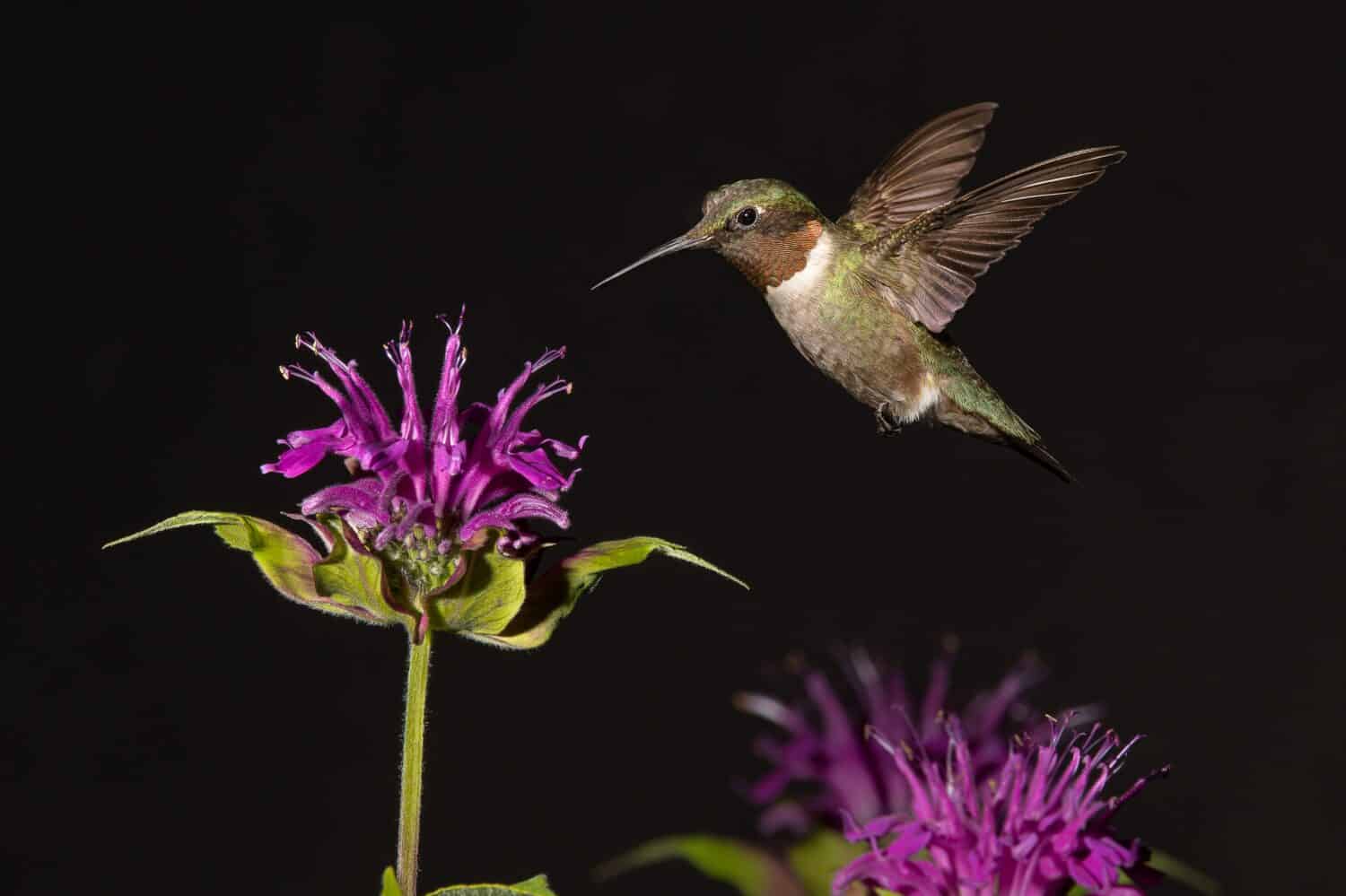Butterflies, bunnies, and birds are some of the most beloved creatures, and many people choose to turn their gardens into oases for these animals. In particular, hummingbirds are very popular, and gardeners try their best to attract these adorable creatures to their gardens. In addition to setting up birdhouses and providing hummingbirds with food sources, you can also use the power of color to bring these birds to your yard. There are a wide variety of purple plants and flowers that hummingbirds simply can’t resist!
Although hummingbirds seem to like a variety of colors, their favorite is undeniably red. This is typically why products made for hummingbirds, such as feeders, are produced in shades of this color. On the other hand, hummingbirds seem to be indifferent towards shades of blue and green. When planting purple flowers throughout your garden, try to lean towards pinkish-purple flowers instead of indigos. Let’s explore 11 purple plants and flowers that you can add to your garden this season to help attract hummingbirds.
1. Foxglove
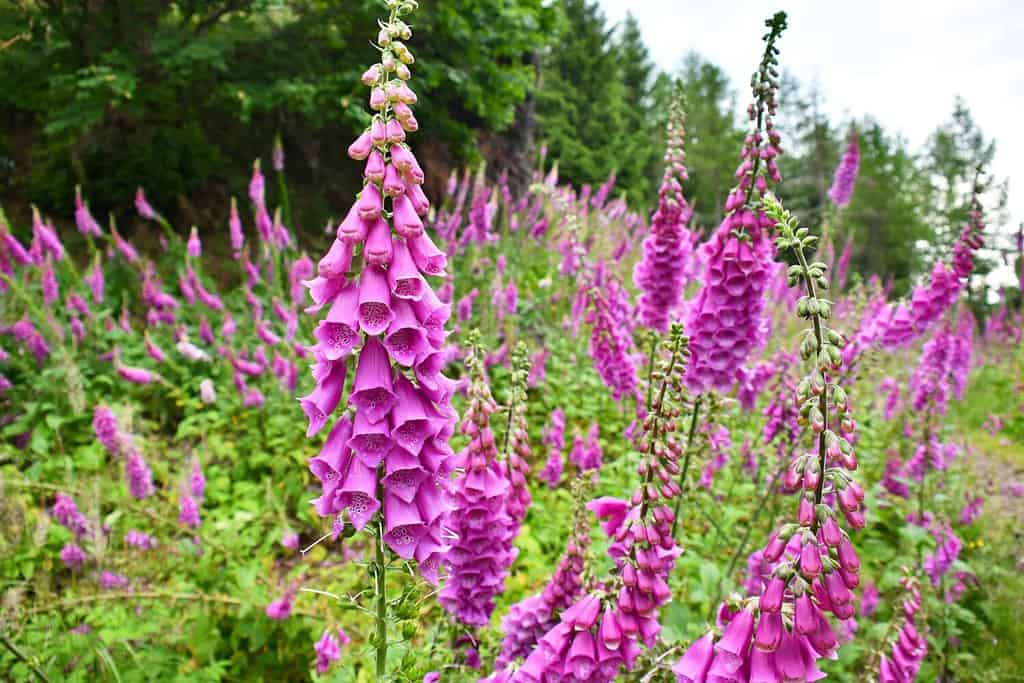
The scientific name for foxglove is
Digitalis purpurea.
©HAL-9000/Shutterstock.com
Although this flower can be somewhat controversial, it is one of the best of all for attracting hummingbirds. Many of these birds prefer visiting long, tubular-shaped flowers. Foxglove fits the bill perfectly, and this plant provides hummingbirds with the nectar they need to stay energized. These flowers are easy to grow and maintain, and they come in a variety of shades of white, pink, and purple. However, gardeners should be aware that foxglove is toxic to both animals and humans. If you have house pets that frequently visit your garden, you should consider alternatives to this flower instead. In addition, you should take care to use gloves while handling this plant as contact with skin may cause irritation.
2. Phlox

The best time of year to plant phlox is during the early fall or late spring.
©iStock.com/Lurida
These vibrant flowers are famous for their ability to attract a variety of important animals to your garden. In addition to being favored by hummingbirds, phlox also helps draw butterflies, moths, and honeybees to your home. Much like foxglove, this flower comes in a variety of shades. Gardeners can choose from pinks, purples, and shades of violet. These flowers are easy to grow and require little upkeep after being established. However, it’s important to plant phlox in an area that gets plenty of sun for the best blooms.
3. Lupine
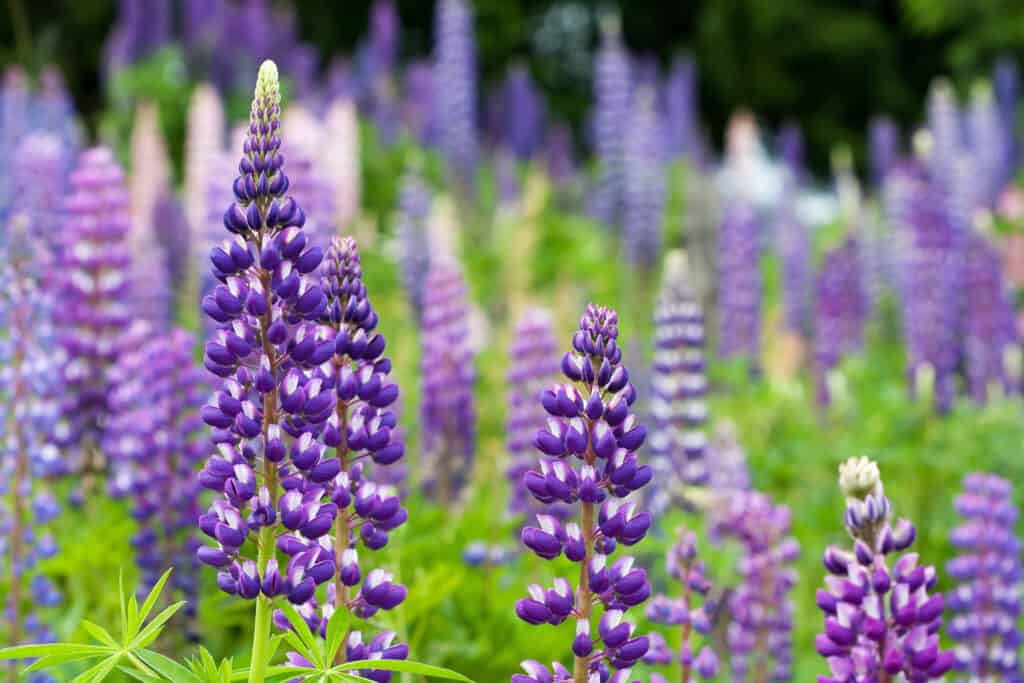
Lupine flowers are also sometimes nicknamed “bluebonnets.”
©iStock.com/yuelan
Similar to foxglove, lupine is a long, tubular flower. Flowers of this shape are much preferred by hummingbirds, making them the perfect addition to any garden. Although these tiny blossoms don’t have a long bloom time, hummingbirds will go out of their way to visit them while they’re available. However, these plants can also be harmful to animals if ingested, so be sure to keep your pets far away from your lupine plants.
4. Snapdragon
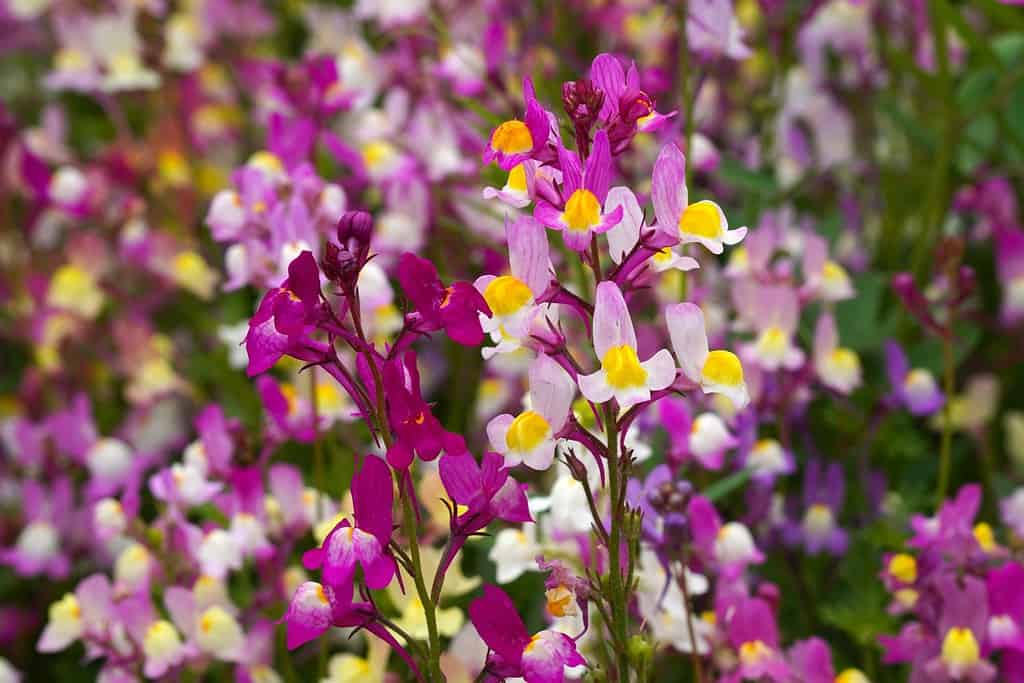
These flowers are also available in many shades of red and pink, which will also be useful for attracting hummingbirds.
©PT Hamilton/Shutterstock.com
Snapdragons are hard to miss among a field of flowers due to their vibrant appearance and showy petals. These flowers are excellent for attracting hummingbirds, as they can be seen from long distances and offer an invaluable source of nectar. In addition to these benefits, these flowers are quite hardy, and even gardeners just starting out will be pleased with how low maintenance and easy to grow they are.
5. Daylily

Although many people think of daylilies as orange, these flowers come in shades of deep purple as well.
©VladKK/Shutterstock.com
Daylilies are yet another hummingbird favorite. These delicate blossoms typically flower during the early to mid-summer, however, some varieties can start blossoming during early spring and fall as well. If you plant a variety of daylilies with different bloom times, you’ll be able to enjoy the presence of hummingbirds for months on end, right up until they head out on their migrations!
6. Bee Balm
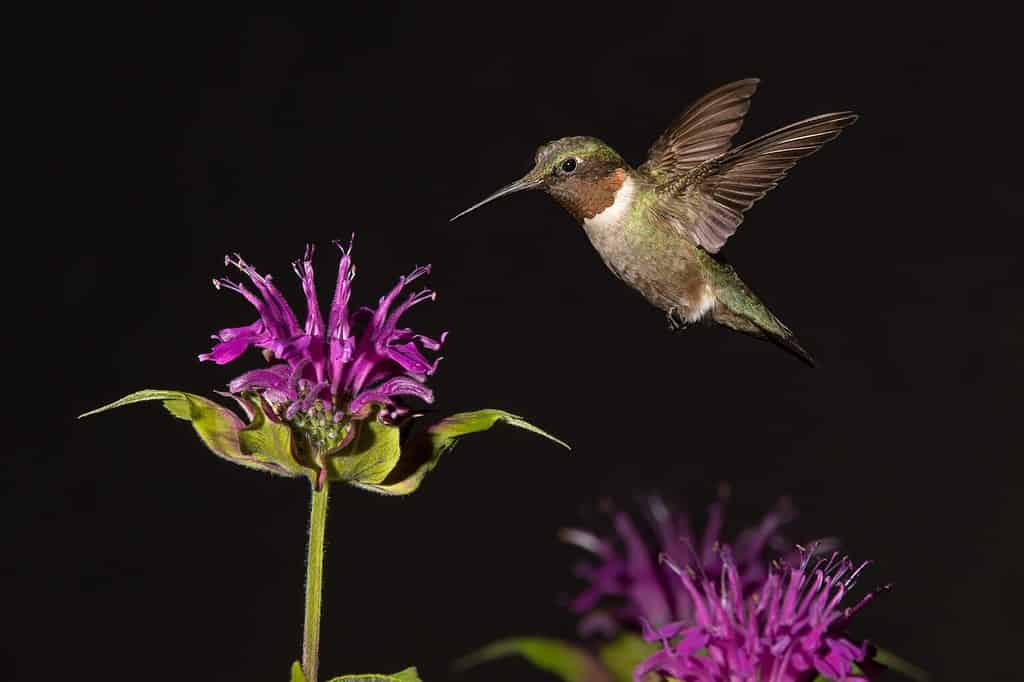
Bee balm typically comes in shades of red, but purple varieties are easily accessible as well.
©Matt Cuda/Shutterstock.com
It’s no secret that bee balm is a favorite flower among many pollinators. As its name suggests, this flower is famous for its ability to attract a variety of bees. However, it also has the capability to attract butterflies, moths, and birds as well. Hummingbirds are partial to this plant, and according to Hummingbirds Plus, “Sugar Buzz Grape Monarda blooms for a long time in the summer and has lush, dark green foliage. The richly colored, tubular flowers in vibrant magenta are a favorite of hummingbirds, honeybees, and butterflies. Plant Sugar Buzz Grape Monarda in your garden to provide a beautiful and nutritious food source for hummingbirds.”
7. Honeysuckle
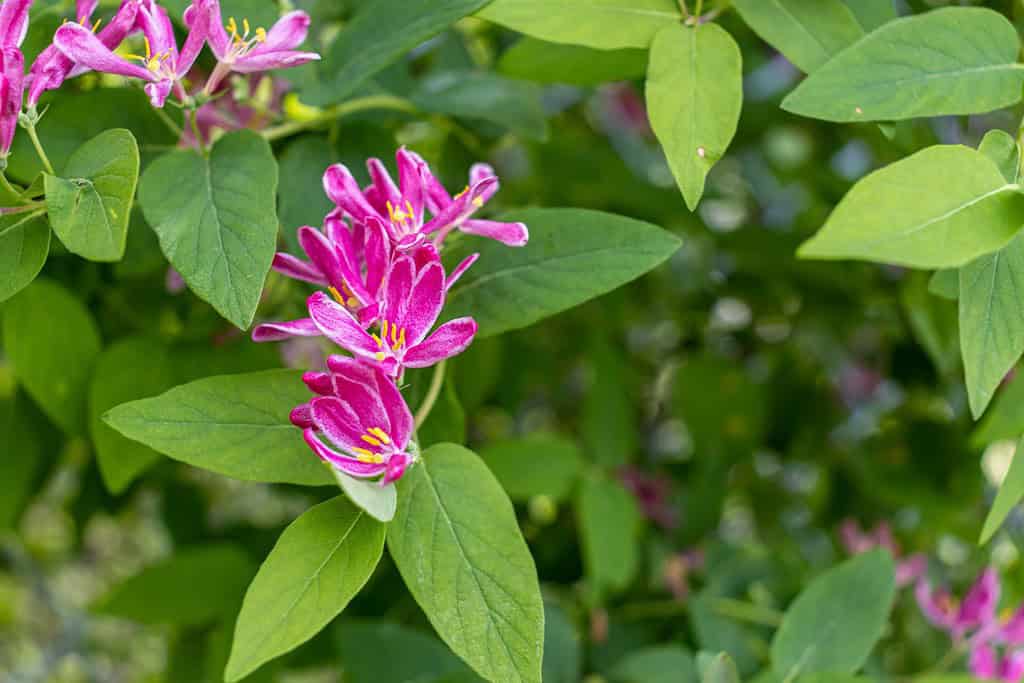
Honeysuckle flowers belong to the family
Caprifoliaceae.
©Jacob Tian/Shutterstock.com
Another long, tube-shaped flower hummingbirds just can’t resist is honeysuckle. You really can’t go wrong with this plant, as hummingbirds seem to love nearly every variety of honeysuckle there is. However, a few purple-toned varieties include the purple-leaf Japanese honeysuckle and the purpleflower honeysuckle.
8. Wisteria

Although wisteria is most famous for its vibrant shades of purple, this flower is also available in shades of pink, white, and blue.
©alexgo.photography/Shutterstock.com
There are very few people who don’t adore the appearance of hanging wisteria flowers. In addition to attracting helpful pollinators, these blossoms are sure to add a touch of elegance to any garden or yard. Hummingbirds, butterflies, and bees are drawn to this flower for its abundant nectar and sweet scent. However, gardeners should be aware that wisteria is a prolific grower. Unlike other plants we’ve discussed today, this flower has the ability to dominate a garden if left unattended. Because of this, homeowners should take care to maintain it.
9. Catnip
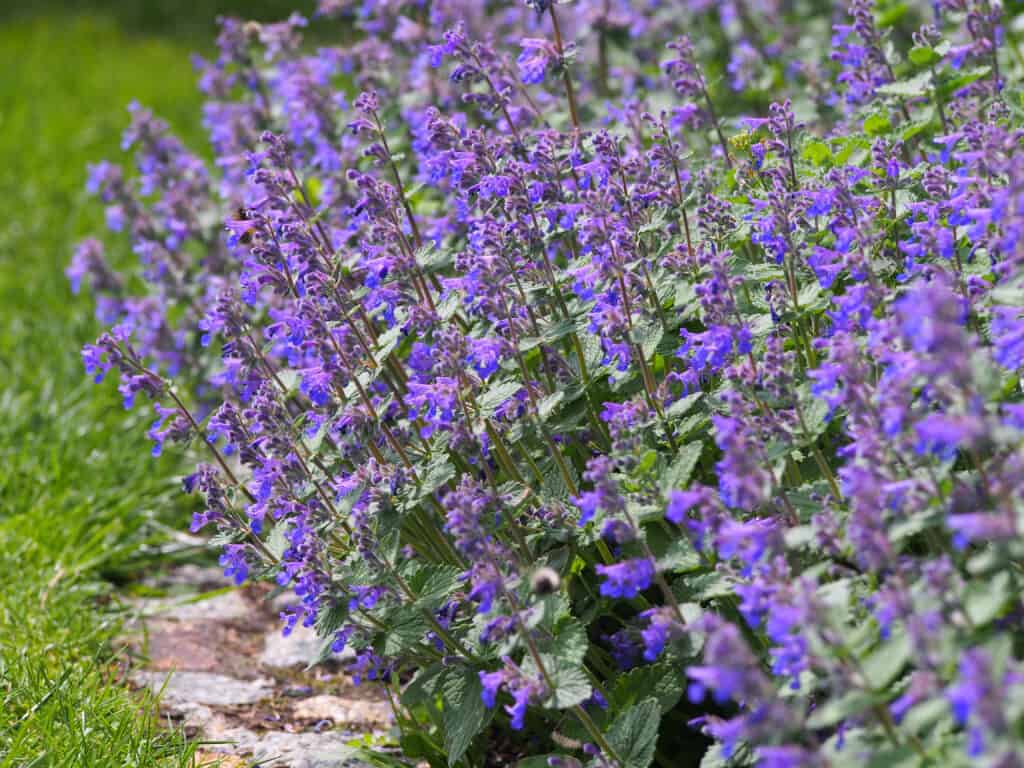
Catnip is also sometimes referred to as “catmint.”
©Anna Gratys/Shutterstock.com
Yes, you read that right. Cats aren’t the only animal that goes crazy for catnip. In fact, hummingbirds might enjoy this plant just as much as felines. Catnip doesn’t contain as much nectar as other flowers we’ve discussed today, but it seems to be popular among these birds nonetheless. Hummingbirds prefer to visit a variety of flowering plants, so offering them something different like catnip is important in keeping them happy as well.
10. Hummingbird Sage
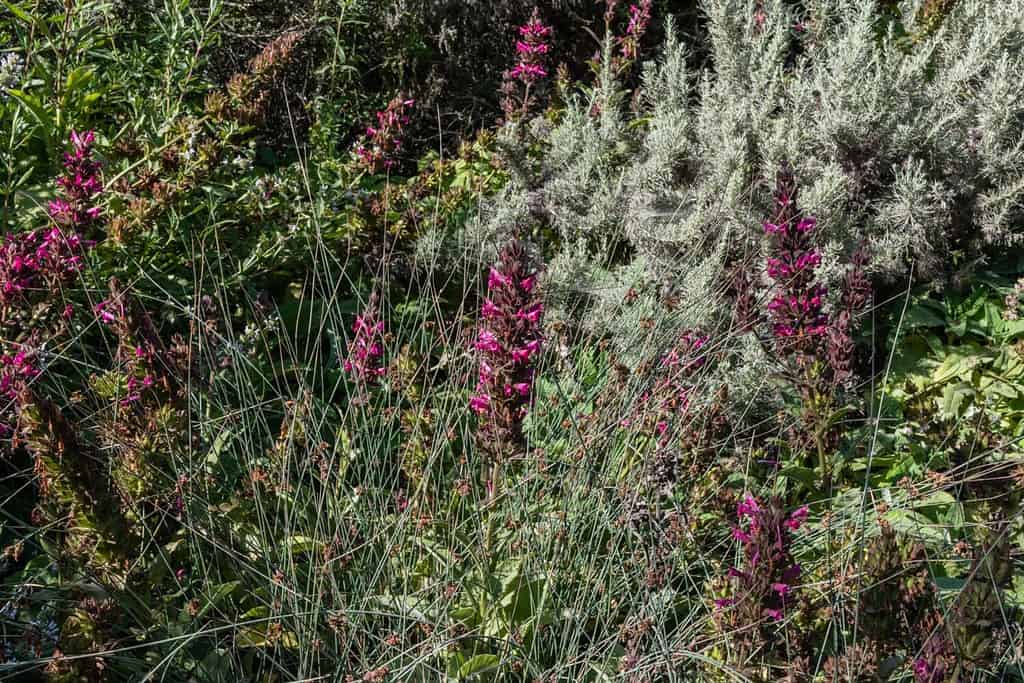
It’s important to offer hummingbirds a variety of plants to choose from in your garden.
©Alex Krassel/Shutterstock.com
As its name suggests, this deep magenta flower is beloved by hummingbirds. Because of this, many gardeners choose to plant this flower for the express purpose of attracting these birds to their gardens. Hummingbird sage grows well with little intervention, however, it is best to plant in partially shaded areas. This plant is drought-resistant, easy to maintain, and it can bloom for months on end.
11. Blazing Star
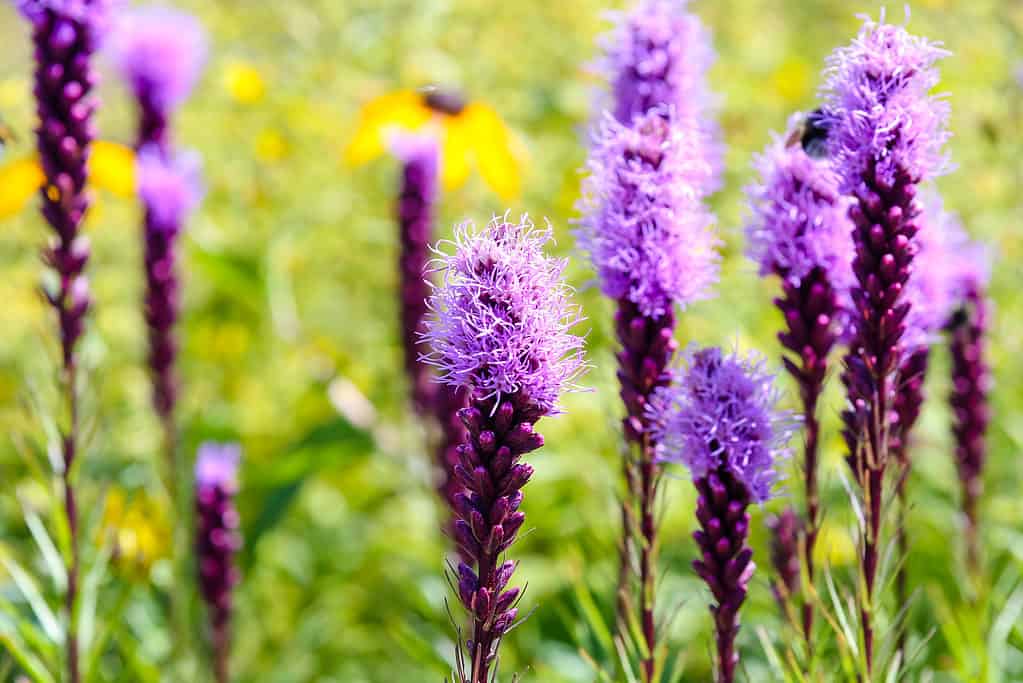
The scientific name for blazing star flowers is
Liatris spicata.
©iStock.com/todamo
Blazing stars are quite a sight to behold. In addition to being hummingbird magnets, these vibrant and showy flowers make a lovely addition to any garden. While pollinators seem to love this flower, a variety of animals such as rabbits and deer are attracted to it as well. These blossoms typically unfurl during the late summer and early fall which provides animals and birds with an invaluable source of late-season nutrition. In essence, planting blazing stars is sure to transform your garden into a paradise!
Thank you for reading! Have some feedback for us? Contact the AZ Animals editorial team.

